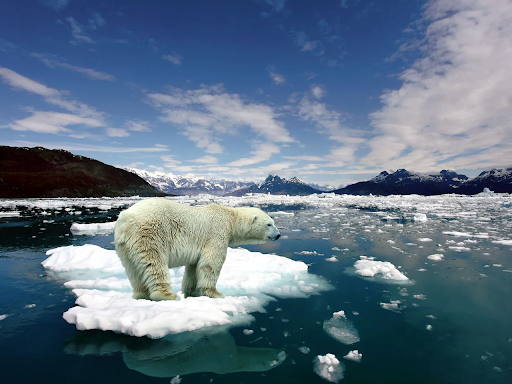
Last year the World Meteorological Organization announced that 2023 became the hottest year to date with temperatures reaching 1.45 ºC. New reports from the European Climate Agency have projected that temperatures in 2024 will not only beat out those in 2023, but they will also break the important 1.5 ºC goal set back in 2015. How do we track the global temperature and set climate goals, and what are we doing to combat climate change?
First, how do we track the world temperature? Well, according to the BBC, we started recording our global temperature after the pre-industrial age ended. In short, this period represented the time before mainstream industrialization and the usage of greenhouse gases became common worldwide. Ever since that era ended between 1850 and 1900, the atmosphere started to take noticeable damage because of the large increase of greenhouse gases and fossil fuels due to manufacturing, war, and pollution. This has led to scientists recording and graphing the global temperature to monitor its rise each coming year. For example, the global temperature in 2023 was 1.45 ºC, but what does the number mean? The numerical value associated with every year represents how much over the average global temperature we’ve reached. Going back to 2023, that means that we were 1.45 ºC over Earth’s average temperature. While this number might seem small it has large implications on the climate. This leads to how we create our climate goals. Looking at the United Nations Climate Change, our current and most important goal of 1.5 ºC was set 9 years ago at the 21st United Nations Climate Summit (COP21) in Paris, France. There, all 196 attending countries discussed and set forth the Paris Agreement, which aimed to limit global warming to a minimum of 1.5 ºC and a larger goal of preventing 2.0 ºC from happening by increasing funding and reducing greenhouse gas production. The purpose of our climate goals is to potentially prevent irreversible change in our ecosystems. We place them way in the future to motivate our nations to help make a change before it becomes too late. But with the 1.5 ºC goal closing in, we might be in for a surprise in the coming years, which I’ll get into later on.
Next, what has caused the temperature to reach 1.5 ºC, and what are the effects of breaking it? According to the United States Environmental Protection Agency, greenhouse gases are the main cause of global warming as expected. Emissions such as carbon dioxide, methane, and nitrous oxide tear up the atmosphere once they are released. Alongside them are fossil fuels and oils. While actions have been taken to reduce greenhouse gas emissions, they still come from many common sources such as heat, electricity, and transportation, utilities that are essential to our daily lives. This has directly led to the deterioration of our atmosphere, causing higher and abnormal temperatures year-round and to the eventual passing of the crucial 1.5 ºC goal.
But what effects would that bring to Earth? So far in 2024, we have seen devastating natural events such as increased flooding, hurricanes, wildfires, and earthquakes all over the world. Looking at data from the Natural Resources Defence Council, this has only been a preview of what’s to come. In the article they describe the 1.5 ºC goal as a pivotal threshold or turning point, saying that “hitting a tipping point should be avoided at all costs, as it would bring devastating losses to ecosystems, societies, and human lives.” When we break the 1.5 ºC goal, there will likely be major setbacks to our ecosystems, such as more frequent, and intense weather events, and irreversible habitat degradation. Already our sea levels have been rising, due to our glaciers and ice sheets melting at rapid rates. In our oceans, coral reefs and specific species could start dying out because of the hotter water temperature. On the land, we face heightened heat waves and increased droughts, hurting vegetation and soil growth. We might also see the displacement of biological life all over the world as habitats continue to be destroyed, and as weather patterns continue with their irregularities.
With 2024 almost certain to become the hottest year ever, what are we doing moving forward? Recently, during the COP29 meeting, the attendees agreed upon a $300 billion fund for protecting developing countries from climate change by limiting the amount of greenhouse gases in the air.
While this is a large overarching goal, there is a lot the average person can do to combat climate change as well. To help limit greenhouse gas emissions you could consider walking or biking instead of driving to your next destination. You can try turning off unnecessary or unused electrical or heat devices in your household. Lastly, always remember to use, reuse, and recycle anything you can. While these are small actions, they can have a large impact. So stay hopeful for change in the future, and stay thankful for what we have right now.


